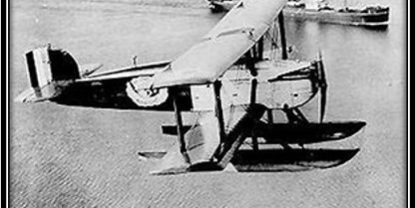This Day in Aviation History: Flight Hardships and First Flight Around the World
Contributor: Barry Fetzer
Sources: History.com
It’s hard to imagine and nearly impossible to remember given that to actually remember, we’d have to have been born at least 105 or 106 years ago (to be past the age of childhood amnesia) and have been nearby or in an aircraft to remember what flying in the early days was like. And there are very few of us born 105 years ago that are still living.

Courtesy of relationship-therapist.com.
Today flying is so routine, so safe, and so comfortable, it’s very hard to imagine the flight hardships in 1924. So, each time we take off we should remember and give great credit to the early aviation risk-takers who pioneered human fight and who put themselves in great danger—very often mortally—to take human flight beyond being merely a “flying circus” act.
One hundred years ago today, April 6, 1924, was a very historic day in annuls of aviation. History.com reports that, “Eight American pilots departed Seattle’s Sand Point Naval Air Station in four modified Navy torpedo bombers, in hopes of becoming the first people to travel around the entire globe by air—something attempted unsuccessfully by several European flyers in previous years. After 175 days (flying time: 371 hours 11 minutes), and a few hiccups along the way, they completed the mission.

Douglas World Cruiser. Courtesy Wikipedia.
“The team of aviators from the U.S. Army Air Service took off in the four Douglas World Cruiser planes—made, in part, out of Sitka spruce trees from the Pacific Northwest—on an unusual westerly flight path rather than the usual easterly attempt. Despite bad weather, the pilots of the planes – called the Seattle, the Boston, the Chicago and the New Orleans – departed for Alaska. The Seattle sadly crashed into a mountain on the Alaska Peninsula. Its pilot—Major Frederick Martin, who was also the mission commander—survived 10 days in the wilderness, along with Staff Sergeant Alva Harvey, before being rescued. The other three planes went on to Japan, where their engines and pontoons were replaced. In India, the three planes got new engines and wings, and the pontoons were swapped for wheels.

Flight commander Frederick Martin and Alva Harvey crashed the Seattle on a mountainside near Point Moller, Alaska, on April 30. Both survived, but their journey around the world, and that of the Seattle, was over. Credit: National Air and Space Museum, Smithsonian Institution
“The rest of the journey took the crew across modern-day Pakistan, Iran, Iraq and Turkey. The pilots landed in Paris on July 14 for Bastille Day, then went on to London and Hull, England. There, the planes got pontoons re-installed and launched to cross the Atlantic Ocean . The Boston had to land between the Faroe Islands and Iceland; the crew was rescued, but the aircraft sank. The prototype Douglas World Cruiser tester plane was renamed Boston II and replaced the sunken craft. Boston II joined the other two remaining planes for their victory lap across North America. The three planes landed on September 28 at Sand Point to a jubilant welcome. The journey covered about 27,000 miles and included 74 landings in 22 countries.”
A newsreel video of the historic flight can be found here: https://youtu.be/Qi_yIEsz21w
Highlighting how dangerous flying still was almost exactly four years later, an Associated Press article in the NY Times (copied below) described how flyers were putting their “trust in God” to get them through…but one of the crewman carried a pistol to end their misery “by shooting his companions” should this have been necessary.

Fetzer family photo of an original newspaper clipping donated to the Norfolk Aviation Museum.







